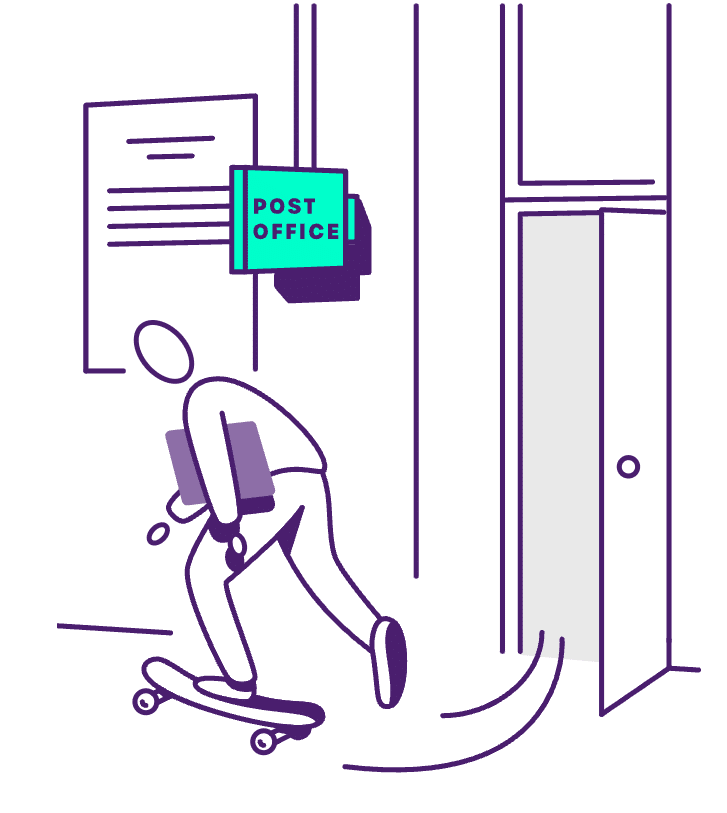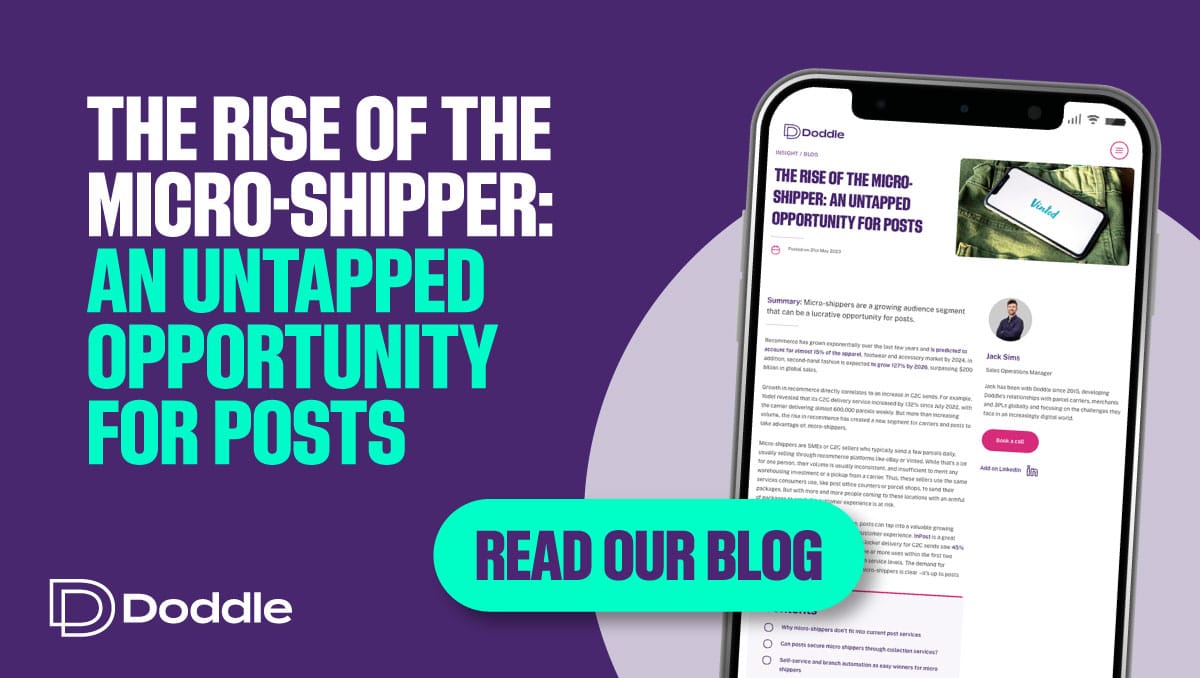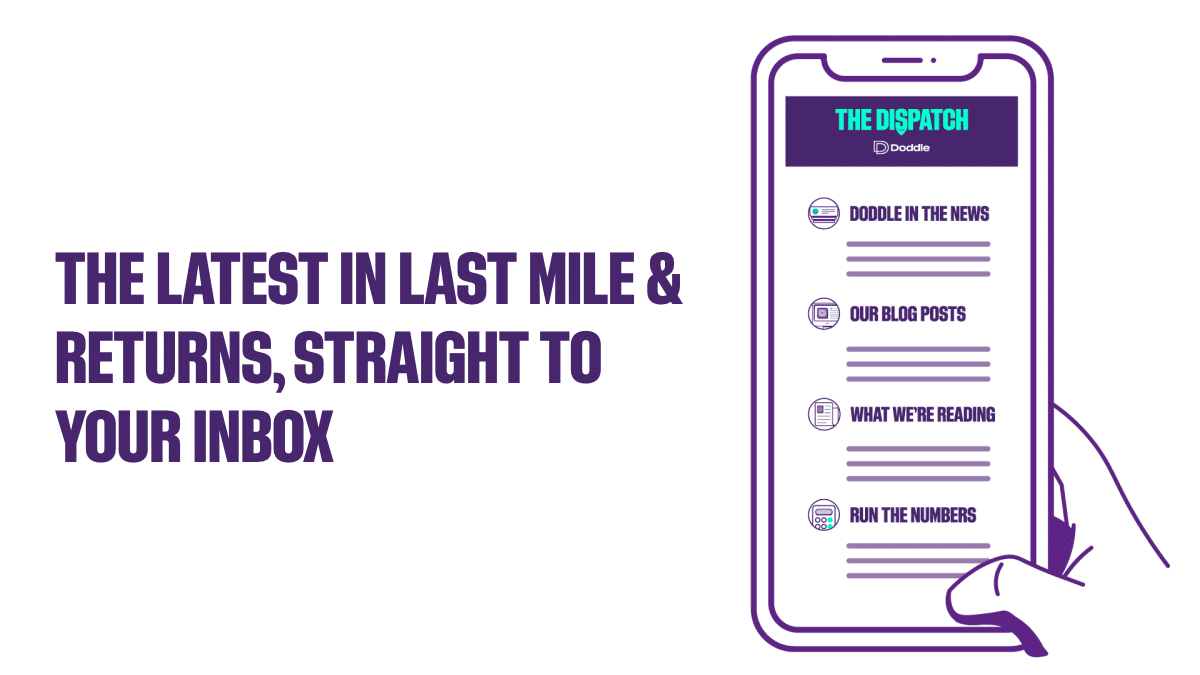Insight / Blog
How Posts will come to rely less on mail

Summary: As letter volumes decline, posts are re-evaluating their physical footprint, but they have a huge opportunity to maximise its value.
This article was originally published in the September issue of Postal and Parcel Technology International magazine.
For centuries, the role of national posts has been to do two things: to enable communication and to facilitate trade. With advancements in technology, particularly in the last 20 years, the role of a post as an enabler of communication is slipping away. And whilst the inevitable march of technology has reduced the role of letters as a medium of communication, and successive economic shocks like the global financial crisis and now the global pandemic have led to seismic drops in mail volumes around the world, the opportunity for national posts to enhance their position as a facilitator of national and global trade has never been greater.
Growth in the parcel market
The global parcel market grew by US$150bn in 2019, and with ecommerce adoption being given a historic boost by COVID-19, parcel volumes are growing faster than even the most optimistic predictions of only a year or so ago.
Royal Mail have repeated a few times recently that for every letter they lose, they need to handle two parcels to make the same amount of money. For different posts, that ratio will be different, and the speed of mail volume decline will be different too. But for all of them, the future is clear. They must build their business around ecommerce. That doesn’t just mean parcel deliveries, although these are obviously essential. It also means managing returns, it means offering great customer experiences, and it means giving retailers valuable insights. All of that, though, requires a shift in priorities for Posts. As Royal Mail’s interim Chair Keith Williams wrote in the business’ annual report:
“We are accelerating the pace of change in the UK to address the longstanding challenges we face, created by fundamental shifts in the way we communicate (fewer letters) and shop (more B2C parcels).
The postal advantage
Posts tend to have some major advantages over local carrier businesses in terms of geographical coverage and infrastructure, thanks to their post offices. This is where the focus should lie for transformation. With the growing success and usage of parcel shops or PUDO (pickup and dropoff) counters, post offices clearly still have a viable use as places to collect and return ecommerce purchases. Processing more parcels this way has much better unit economics than to-door delivery, with B2C parcel deliveries becoming much more like bulk B2B deliveries, which are far more profitable.
Posts across the world are engaged in trying to find the right size for their post office networks, but one radical way to increase their value to consumer and post alike could be to open them up to other carriers. This allows consumers who are receiving deliveries from other parcel carriers to collect them in post offices. Once there, they can purchase other margin-accretive services, whether that’s government identification, insurance, banking or postage.
Opening up the postal network
Last-mile expert Marek Różycki reckons that opening up these networks actually strengthens the position of Posts – if they already provide the widest and best network for last-mile consolidation, then why would another business need to undergo the huge investment in creating a nationwide network just to compete with an incumbent? A near perfect example of this is the UK Post Office, a recognised and trusted brand in the heart of communities across the UK, which has recently renegotiated its agreement with Royal Mail such that it can now start to deal with other parcel carriers. It is now on the path to offer the use of its 11,000 post offices as a parcel hub for multiple carriers, improving the economics of parcel deliveries for everyone including the consumer, and re-imagining the role of the post office in the community.
The closed-vs-open debate aside, it’s evident that even businesses who are already parcel-focused are having to find ways to consolidate deliveries to shore up margins. For an example, look at UPS’ Q2 results, where a huge increase in B2C volume considerably hurt their bottom line. With a ready-made PUDO network, Posts have a great advantage in this area – they just need to capitalise on it by encouraging consumers to use their post office to collect deliveries and make returns.

Related articles
Return fees or free returns: why not both?
Debates between return fees or free returns miss the bigger picture: how to address the root issues of returns.
Lessons from a decade in the first and last mile
A decade as Doddle taught us some lessons - and Blue Yonder helps us see what will matter in the next decade.
Important lessons from Leaders in Logistics 2024
Leaders in Logistics 24 dived into AI & automation, sustainability, changing ecommerce behaviours, emerging consumer expectations & predicted what the next decade had in store.














